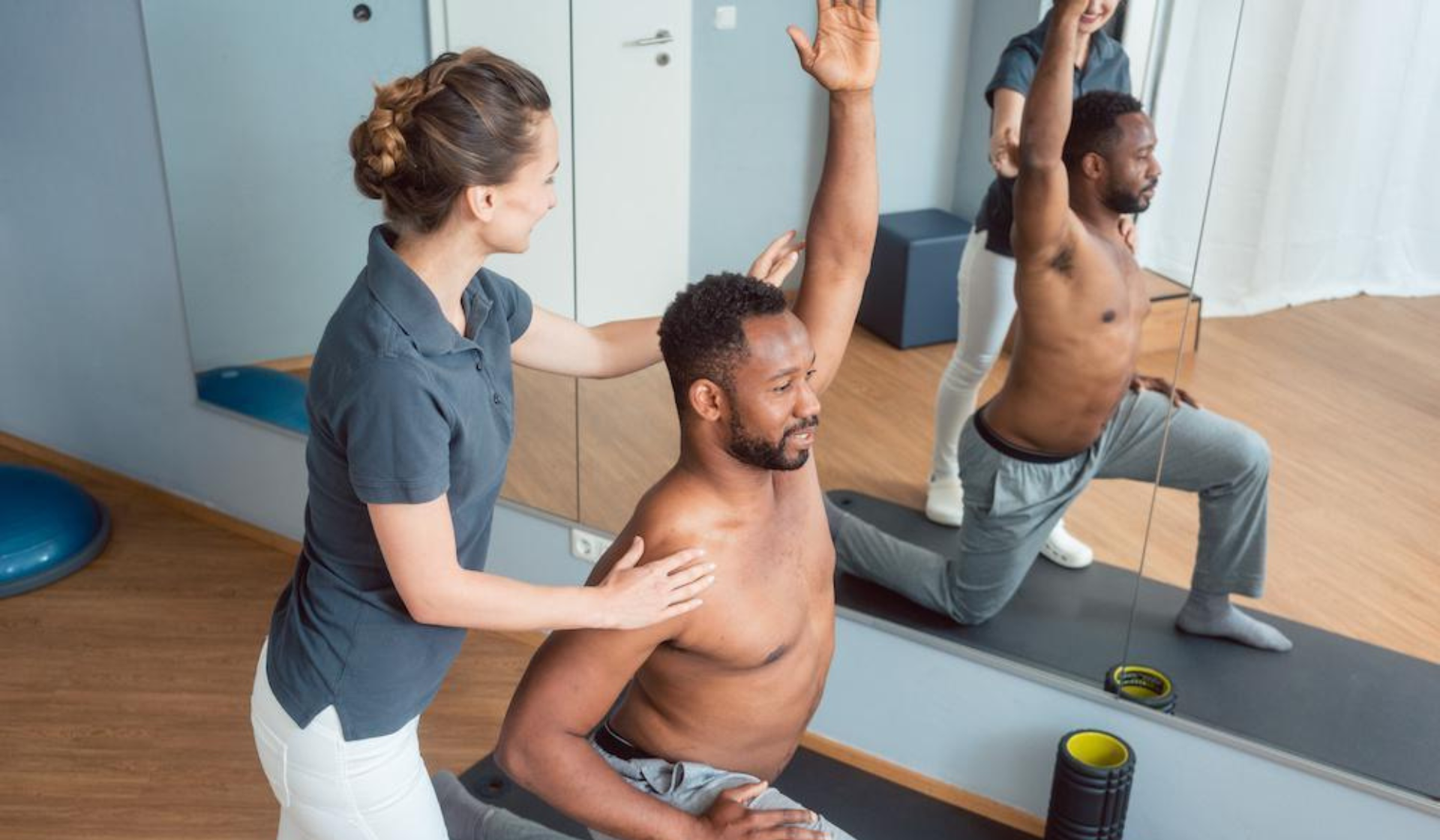Rehabilitation

About Rehabilitation
Rehabilitation encompasses a wide range of interventions aimed at restoring function, mobility, and quality of life for individuals recovering from injury, surgery, illness, or other medical conditions. Here’s an overview of rehabilitation protocols for various populations and conditions:
Total Knee or Hip Replacement: Focus on restoring range of motion, strength, and functional mobility of the affected joint. Emphasize exercises to improve quadriceps and gluteal strength, balance training, and gait re-education.
Progress through stages of rehabilitation to restore knee stability, strength, and proprioception. Include exercises to strengthen the quadriceps, hamstrings, and hip musculature, as well as agility drills and sport-specific training.
Gradually reintroduce stretching and strengthening exercises to the hamstring muscles, focusing on eccentric strengthening and neuromuscular control. Progress to sport-specific activities and agility training as tolerated.
Stroke Rehabilitation: Target motor and sensory impairments through exercises to improve strength, coordination, balance, and mobility. Utilize task-specific training and constraint-induced movement therapy to promote neuroplasticity and functional recovery.
Implement exercises to address specific symptoms and functional limitations associated with each condition, such as gait disturbances, tremors, and balance deficits. Utilize techniques such as proprioceptive neuromuscular facilitation (PNF) and cueing strategies to enhance motor control and movement patterns.
Pediatric Rehabilitation:
Tailor interventions to address developmental delays, motor impairments, or neurological conditions in children. Focus on play-based activities, sensory integration therapy, and family-centered approaches to maximize participation and function.
Provide exercises and education to address musculoskeletal changes, pelvic floor dysfunction, and core stability issues associated with pregnancy and childbirth. Emphasize safe and appropriate exercise progression throughout pregnancy and postpartum recovery.
Focus on maintaining or improving functional independence, mobility, and quality of life in older adults. Include exercises to address balance, strength, flexibility, and cardiovascular fitness, with modifications to accommodate age-related changes and comorbidities.
Post-Cardiac Surgery or Heart Attack: Implement a comprehensive program to improve cardiovascular fitness, reduce risk factors for heart disease, and promote overall cardiac health. Include aerobic exercise, strength training, education on heart-healthy lifestyle habits, and psychosocial support.
Provide exercises to improve respiratory function, endurance, and dyspnea management. Incorporate breathing exercises, aerobic conditioning, and energy conservation techniques to enhance pulmonary rehabilitation.
In all rehabilitation programs, individualized assessment and goal-setting are essential to tailor interventions to the specific needs, abilities, and goals of each patient or client. Collaboration among multidisciplinary team members, including physical therapists, occupational therapists, physicians, and other healthcare professionals, is crucial to optimize outcomes and promote holistic recovery and well-being.
Performances
Contact Us
- 21/1, Kellys Road, Kilpauk, Chennai - 600010, Tamil Nadu, INDIA
- +91 95667 88054
- alignpeakphysio@gmail.com
